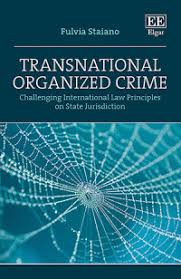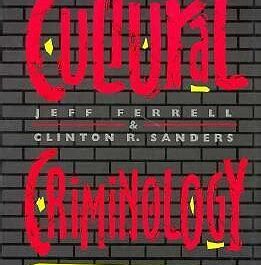Introduction:

Organized crime and corporate crime represent two distinct yet interconnected realms of illicit behavior within society. Organized crime typically refers to criminal enterprises that operate outside the boundaries of the law, engaging in activities such as drug trafficking, human trafficking, extortion, and more. On the other hand, corporate crime involves illegal activities perpetrated by corporations or individuals within them, often for financial gain at the expense of consumers, shareholders, or the public. This essay aims to delve into the intersection between organized crime and corporate crime, exploring how they influence each other and examining notable examples of their symbiotic relationship.
Understanding Organized Crime:
Organized crime is characterized by a hierarchical structure, with leaders at the top orchestrating various criminal activities through a network of affiliates and operatives. These criminal enterprises often transcend national borders, operating on a global scale and exploiting legal loopholes and vulnerabilities in different jurisdictions. The profitability of organized crime activities, such as drug trafficking, arms smuggling, and money laundering, fuels their expansion and perpetuation.
The Link between Organized Crime and Corporate Crime:
Organized crime and corporate crime are not mutually exclusive; rather, they frequently intersect, with organized crime groups infiltrating legitimate businesses or collaborating with corrupt corporate entities to further their illicit interests. This symbiotic relationship manifests in several ways:
Money Laundering:
Organized crime syndicates often seek to launder their illicit proceeds through legitimate businesses, including corporations. By investing in or establishing front companies, they can obscure the origins of their funds and integrate them into the legal economy.
Corruption:
Corporate entities may engage in corrupt practices, such as bribery or embezzlement, to facilitate their operations or secure favorable outcomes. Organized crime groups exploit these vulnerabilities, offering bribes or exerting influence to gain access to markets, evade regulation, or manipulate legislation.
Supply Chains:
Organized crime networks may infiltrate legitimate supply chains, particularly in industries such as agriculture, manufacturing, and transportation. By exerting control over key components of the supply chain, they can smuggle contraband goods, counterfeit products, or illicit substances while evading detection.
Fraud and White-Collar Crime:
Corporate entities may perpetrate fraud or engage in deceptive financial practices to boost their profits or conceal losses. Organized crime groups may collude with these entities to orchestrate complex fraud schemes, insider trading, or securities fraud, exploiting weaknesses in regulatory oversight and corporate governance.
Case Studies:

The Cali Cartel and Money Laundering: The Cali Cartel, one of the most powerful drug trafficking organizations in Colombia, established a vast network of front companies to launder its proceeds. Through investments in legitimate businesses such as real estate, construction, and finance, the cartel concealed billions of dollars in illicit funds, undermining efforts to combat money laundering.
Enron and Corporate Fraud
The collapse of Enron Corporation in 2001 revealed widespread corporate fraud and accounting irregularities, orchestrated by top executives to inflate the company’s financial performance artificially. Enron’s fraudulent practices, including off-balance-sheet financing and manipulation of energy markets, led to billions of dollars in losses for investors and employees.
cteristics of Organized Crime:

Organized crime thrives on structure, hierarchy, and secrecy. Criminal enterprises, such as drug cartels, mafia syndicates, and human trafficking rings, operate with clear chains of command and specialized roles. They engage in a range of illegal activities, including drug trafficking, extortion, money laundering, and racketeering. These organizations often transcend national borders, leveraging global networks to expand their operations and evade law enforcement.
One defining feature of organized crime is its adaptability. Criminal groups continuously evolve to exploit new opportunities and circumvent law enforcement efforts. They utilize sophisticated communication technologies, such as encrypted messaging apps and dark web platforms, to coordinate activities and avoid detection. Additionally, organized crime syndicates often infiltrate legitimate businesses, using them as fronts for illicit operations or to launder money.
Impacts of Organized Crime:
The impact of organized crime extends beyond mere economic consequences to encompass social, political, and security implications. In communities where criminal organizations operate, they perpetuate violence, corruption, and instability. Drug trafficking, for example, fuels addiction and undermines public health efforts, while human trafficking exploits vulnerable individuals and perpetuates human rights abuses.
Moreover, organized crime undermines the rule of law and erodes trust in institutions. Corruption and bribery enable criminal groups to influence government officials, law enforcement agencies, and judicial systems, compromising their integrity and effectiveness. In some cases, organized crime networks even infiltrate political structures, exerting control over key decision-making processes and undermining democratic governance.
Characteristics of Corporate Crime:

Corporate crime encompasses a wide range of illegal activities perpetrated by corporations or individuals within them. These offenses can include fraud, insider trading, environmental pollution, antitrust violations, and product safety breaches. Unlike organized crime, corporate crime often occurs within the confines of legitimate businesses, exploiting legal loopholes or engaging in unethical practices to maximize profits.
One common characteristic of corporate crime is its complexity. White-collar criminals often employ sophisticated schemes and financial instruments to conceal their illicit activities. They may manipulate accounting records, falsify documents, or engage in complex financial transactions to deceive investors, regulators, and consumers. Moreover, corporate crime can have far-reaching consequences, affecting not only shareholders and employees but also the broader economy and society.
Impacts of Corporate Crime:
Corporate crime can have devastating effects on individuals, communities, and the environment. Financial fraud and market manipulation can erode investor confidence, leading to economic downturns and job losses. Environmental crimes, such as illegal dumping or pollution, pose serious risks to public health and ecosystems, often disproportionately impacting marginalized communities.
Furthermore
corporate crime undermines trust in business institutions and regulatory frameworks. Scandals involving major corporations erode consumer confidence and tarnish corporate reputations, leading to regulatory reforms and increased scrutiny from stakeholders. Moreover, the prevalence of corporate crime can foster a culture of impunity, where unethical behavior is normalized and perpetrators face minimal consequences.
Differences between Organized Crime and Corporate Crime:

While both organized crime and corporate crime involve illegal activities for financial gain, they differ in their structures, objectives, and societal impacts. Organized crime is typically characterized by hierarchical structures, violence, and transnational operations, whereas corporate crime often occurs within legally established entities and involves complex financial manipulation or regulatory violations.
Moreover, organized crime tends to operate outside the boundaries of the law, engaging in activities such as drug trafficking, extortion, and arms smuggling, whereas corporate crime may involve violations of specific regulations or statutes, such as securities fraud or environmental law. Additionally, the impacts of organized crime are often more immediate and visible, affecting communities through violence, corruption, and social disruption, while corporate crime can have subtler but no less significant consequences, such as economic instability, environmental degradation, and erosion of public trust.
Conclusion:
Organized crime and corporate crime represent distinct but interconnected manifestations of criminal behavior within society. While organized crime thrives on secrecy, violence, and transnational networks, corporate crime often occurs within the confines of legitimate businesses, exploiting legal loopholes or engaging in unethical practices to maximize profits. Despite their differences, both forms of crime pose significant challenges to law enforcement, regulatory agencies, and society at large. Addressing these challenges requires comprehensive strategies that target not only the perpetrators but also the underlying social, economic, and institutional factors that enable criminal behavior to flourish. By understanding the complexities and intersections of organized crime and corporate crime, society can work towards creating a more just, equitable, and secure future for all..

